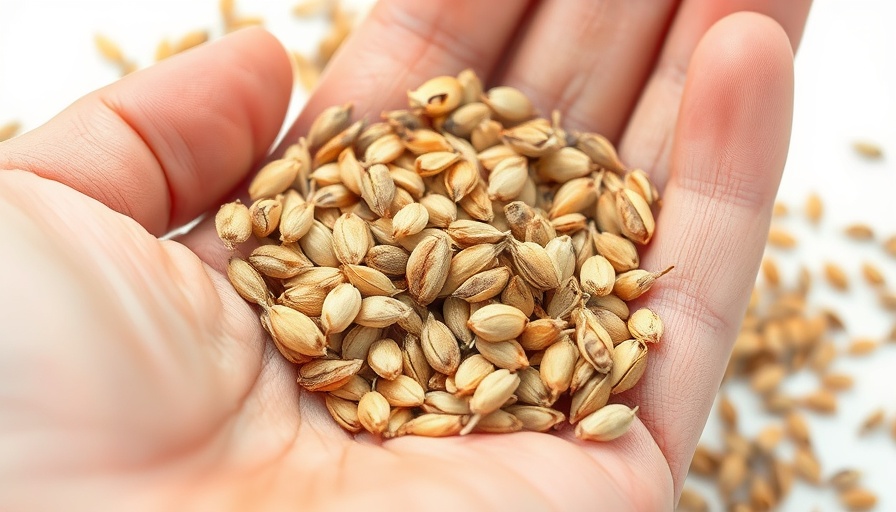
Harvesting Nature's Bounty: Fall Seed Collection Time
As the vibrancy of summer shifts towards the mellow hues of fall, home gardeners can embrace the season as an ideal time for seed collection and storage. This activity not only promises a bountiful garden for the upcoming seasons but also enhances the sustainability of your gardening practice. In this guide, we will explore techniques for effective seed collection from the best plants, emphasizing the significance of native perennials and how to secure seeds at the optimum moment.
Understanding Your Seeds: Hybrids vs. Open-Pollinated Varieties
One of the first steps in successful seed collection is understanding the type of seeds you are working with. While some plants can be grown successfully from seeds, the type of seed—hybrid or open-pollinated—can make a major difference. Hybrid plants, bred from specific crossbreeding, often fail to produce seeds that maintain the characteristics of the parent plant, leading to unpredictable results in your garden. On the other hand, open-pollinated varieties will yield seeds true to the parent plant, promising consistent growth with recognizable traits next planting season.
Key Plants for Fall Seed Collection
During the fall, several native perennial plants are ripe for seed harvesting. Milkweed, known for its ecological value in supporting pollinators, is among the top choices. Other great candidates include 'Plains Coreopsis' and 'Purple Coneflower Echinacea,' both of which not only contribute beauty but also ecological diversity to your garden. By focusing on such plants, you not only create a resilient garden for future seasons but also encourage biodiversity in your local environment.
The Art of Timely Harvesting
Successful seed collection lies in timing. Allow your favorite plants to flower and develop seeds before collecting them, keeping a watchful eye on those that are ready. Some plants drop their seeds in a matter of days, while others may take weeks to reach maturity. Be sure to check your plants regularly to capture seeds before they scatter in the wind or are consumed by wildlife. If you wish to keep certain plants thriving in your garden, consider leaving a portion of their seeds intact for natural reseeding next year.
Storage Tips for Longevity
After you’ve collected your seeds, how you store them plays a crucial role in their viability. It’s best to place them in a cool, dry environment and use airtight containers, such as glass jars or sealed envelopes, labeling each with the plant type and harvest date. This practice ensures that your seeds stay dry and protected from humidity—two critical factors that can compromise their lifespan. For those living in areas like Muskegon, where the climate can affect seed integrity, it’s even more vital to avoid excess moisture.
Planning Ahead: Setting Up Your Garden for Success
As you prepare for the next planting season, think about how you can structure your garden’s layout. This is where starting a backyard planting box or constructing outdoor soil beds can prove beneficial. Community members throughout Muskegon are increasingly engaging in DIY projects aimed at enhancing their outdoor spaces. With a focus on sustainable gardening practices, simple initiatives like building elevated planter boxes or designing a backyard utility house reinforce both gardening success and community interaction.
Conclusion and Your Next Steps
Fall seed collection is an enriching practice that not only crops future gardens but roots a gardener’s experience. By understanding your plant varieties, having keen timing, and storing seeds properly, you set the stage for a resilient garden and a better ecological footprint. As you consider your plans for next season, why not take the plunge into supportive projects? Whether it’s starting your own planting box or enhancing your outdoor garden setup in Muskegon, there's no better time than now.
 Add Row
Add Row 
 Add
Add 


Write A Comment